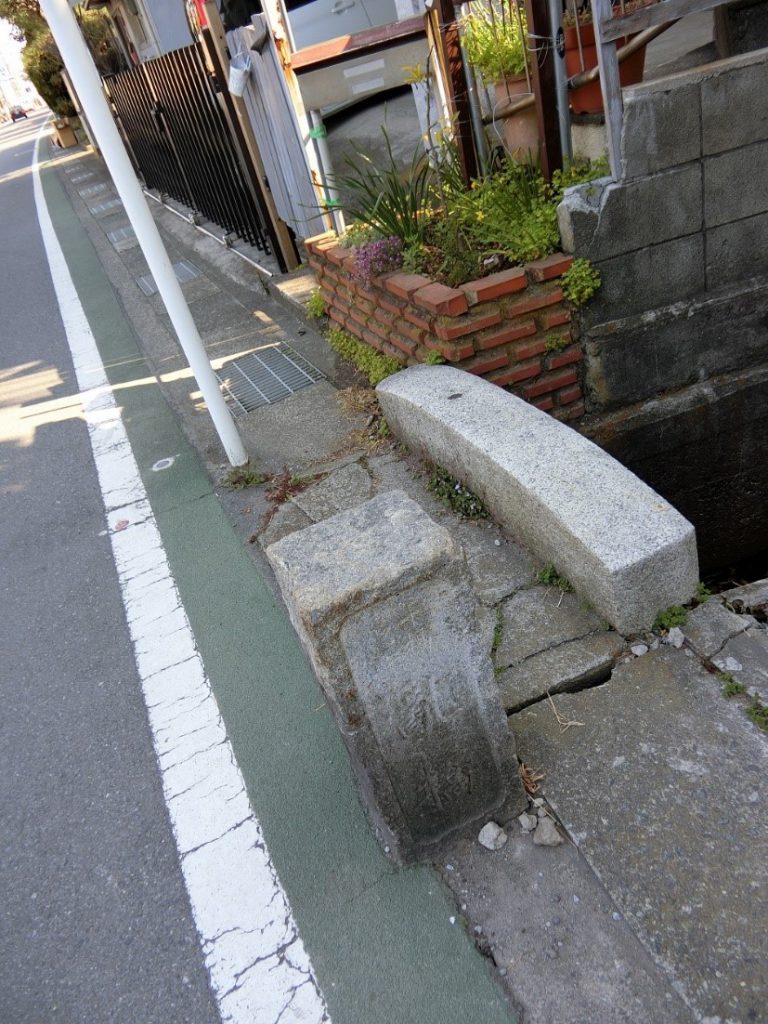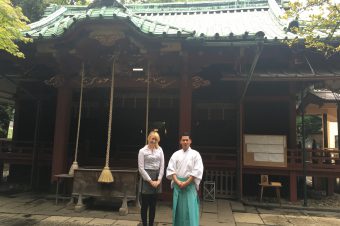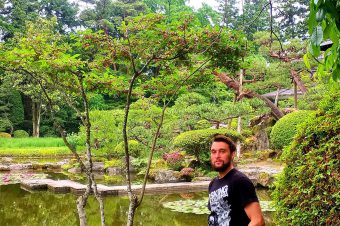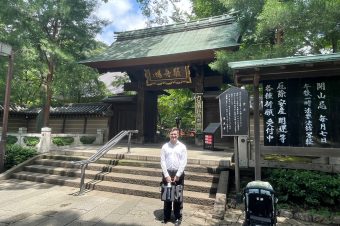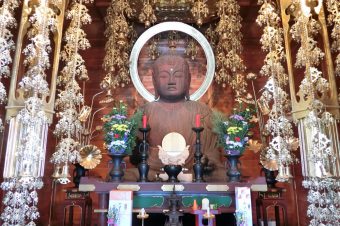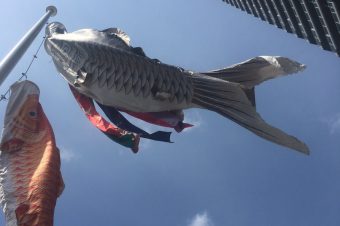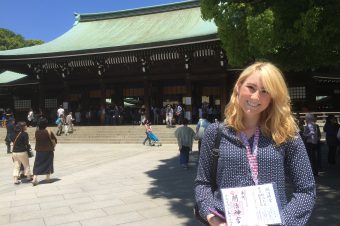Gosho Jinja enshrines the patron deities of my neighborhood, Zaimokuza. Plural because the shrine is an amalgamation of five shrines which was mandated by the Meiji government in 1908. The name Gosho translates to “five locations.”
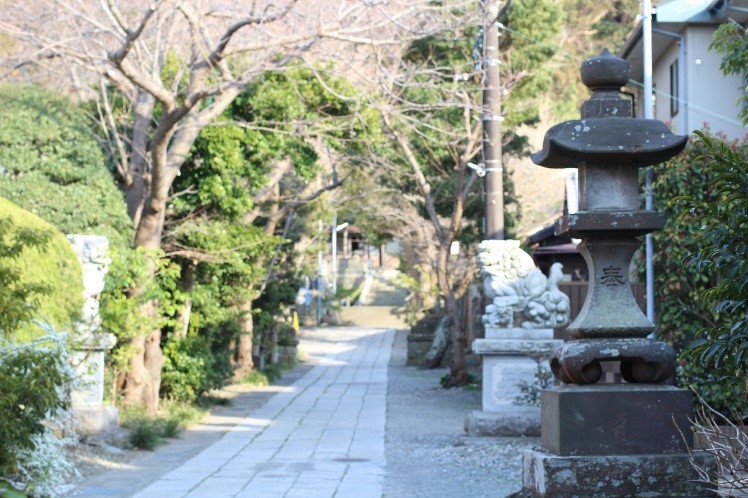
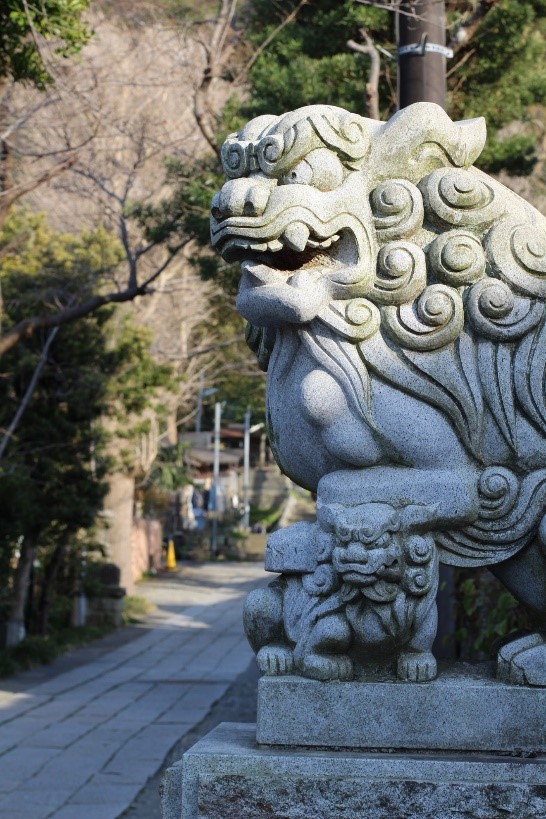
The patron deity of a neighborhood is known as the “uji-gami.” At one time in my life, things weren’t going too smoothly. Someone asked me if I happened to be sleeping at night with my feet pointed at my uji-gami, so I pulled out a map and checked. Guess what, my feet were pointed at Gosho Jinja! I started sleeping with my head towards the shrine instead, and things took a turn for the better.
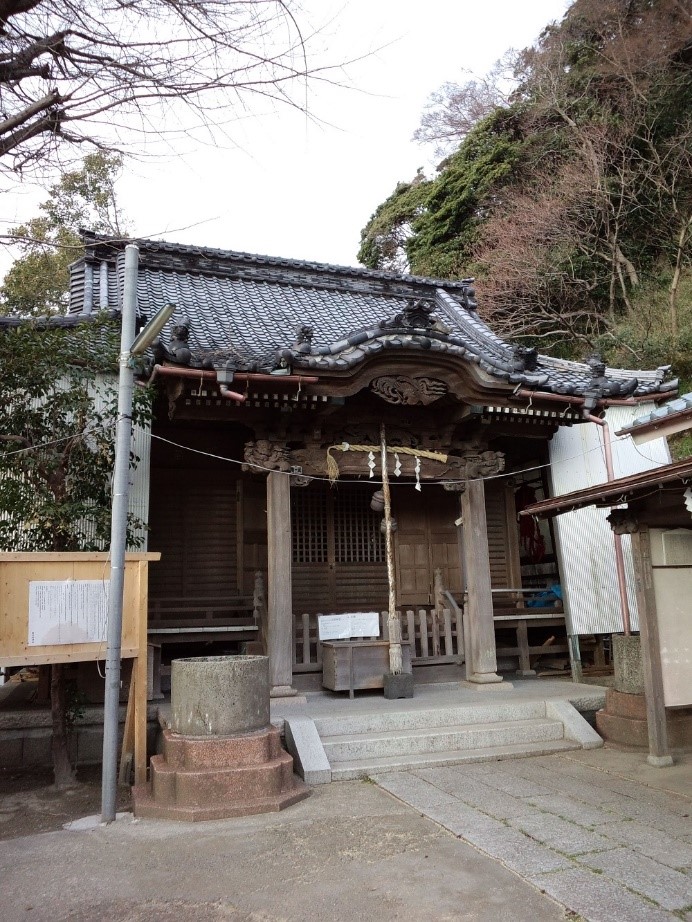
Normally, the omikoshi (portable shrines) of most shrines are jealously locked up until called for. Not so with Gosho Jinja! Three omikoshi are displayed daily. You might have to peek through the doors, but they are plainly visible through the glass nonetheless.
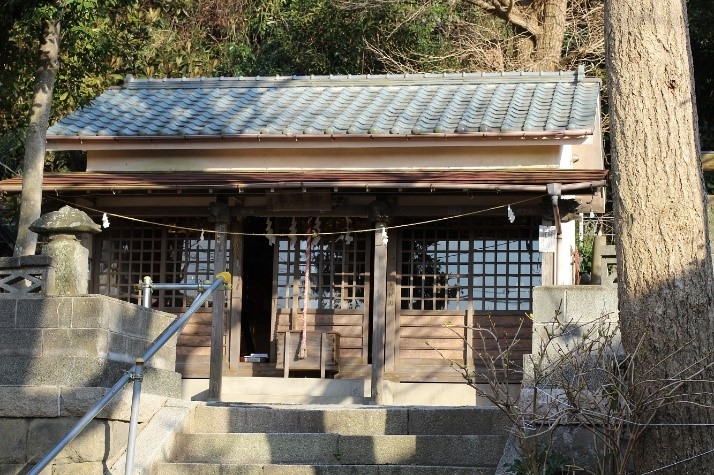
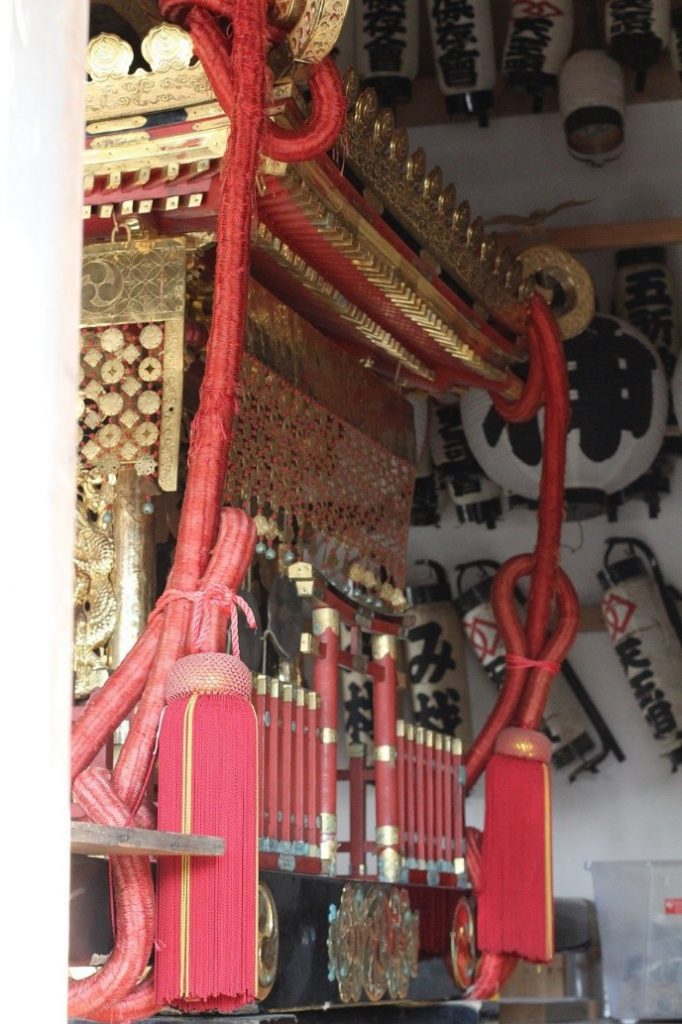
It is a small neighborhood shrine, and hosts many local events throughout the year. Every year on an evening during late August, just as the heat of the summer starts to lose its edge, the shrine hosts a “welcome cooler weather” festival. Grilled corn, grilled mackerel, yakisoba, shave ice, and various cold drinks are sold. Your humble scribe usually volunteers to help cook yakisoba. Standing over a hot grill making 300 servings of yakisoba is no picnic, but I consider it an important part of being a good neighbor.
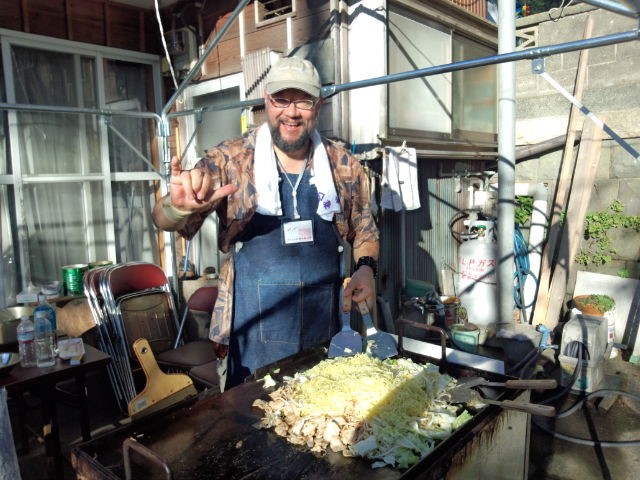
The preeminent festival takes place on the second Sunday in June. Three deities transfer to the three omikoshi mentioned above, are paraded through the neighborhood streets, then taken to Komyoji Temple to be greeted by the head priest there. Next, the omikoshi are taken onto Zaimokuza Beach where they receive an invocation. The bearers for two of the omikoshi prepare for what comes next by stripping down to their loincloths.

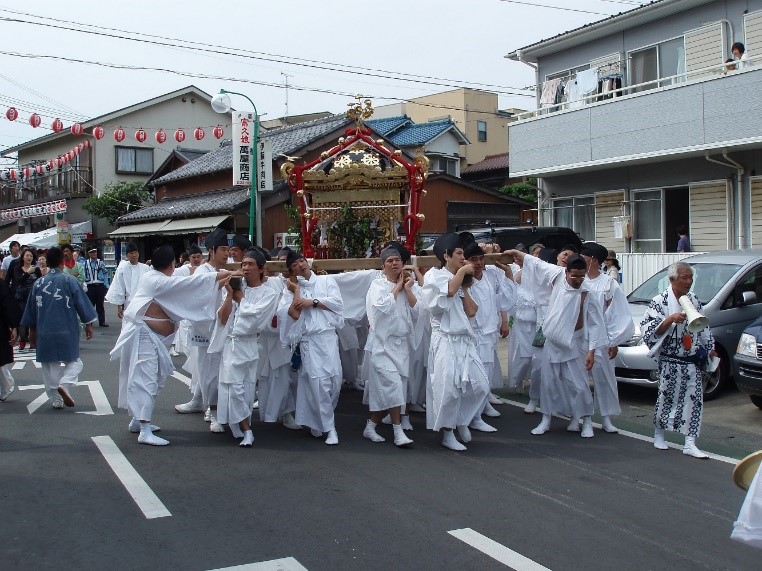
The two crews then hoist their omikoshi, and head down the beach right into the surf zone! (The third omikoshi is a designated Kamakura Valuable Cultural Treasure, so it stays on the beach.) Many Zaimokuza inhabitants rely upon the sea, directly and indirectly, for their livelihood so this is probably the most important part of the festival. Certainly, the most dramatic part!
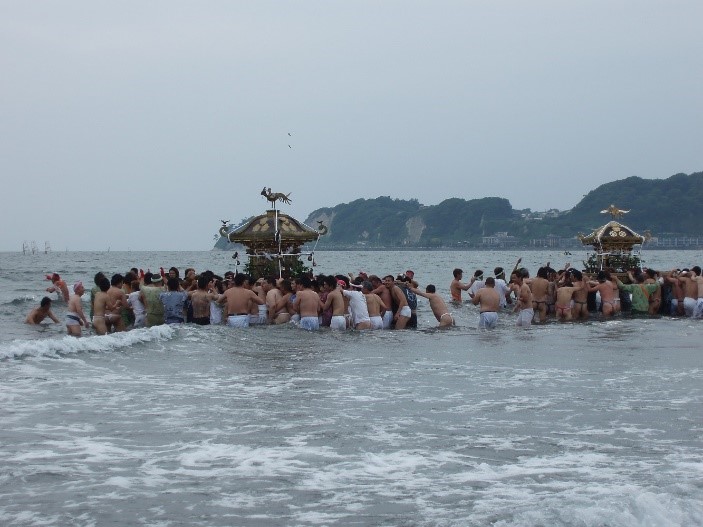
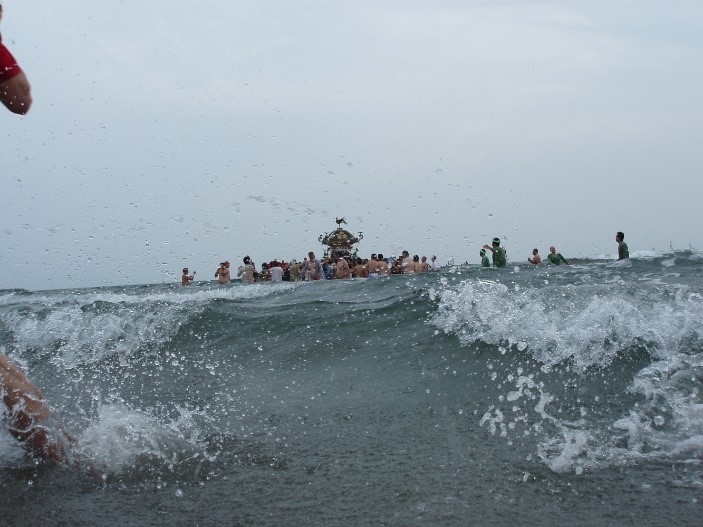
The two omikoshi go east/west in the surf zone, paralleling Zaimokuza Beach. This is truly a remarkable sight, so if you happen to be near Kamakura during that specific weekend, I strongly recommend you come to Zaimokuza beach around 3 PM. If possible, please also stop by Gosho Jinja itself and pay your respects to the deity.
Finally, while you are still in the Zaimokuza area, try finding the Midare-bashi. It is a very tiny bridge, probably only a meter or so in length, but still formally designated a bridge by the Japanese government. The bridge is on the bus road between Gosho Jinja and Suidoumichi bus stops. There is a huge stone tablet, about the height of the average Japanese male adult, marking the spot so keep an eye peeled for that to help you find the bridge. (The stone tablet is on the other side of the road from where the picture was taken.)
